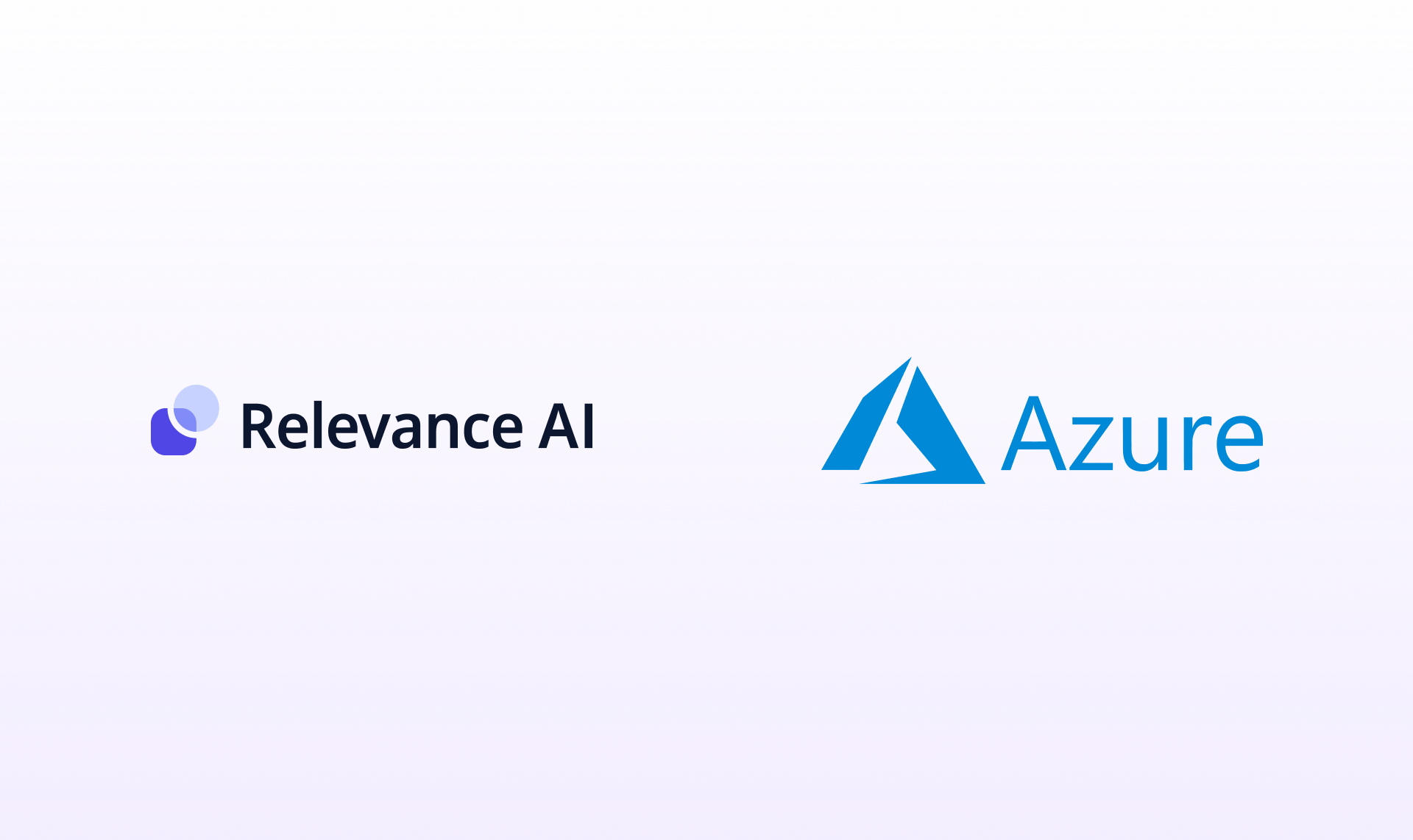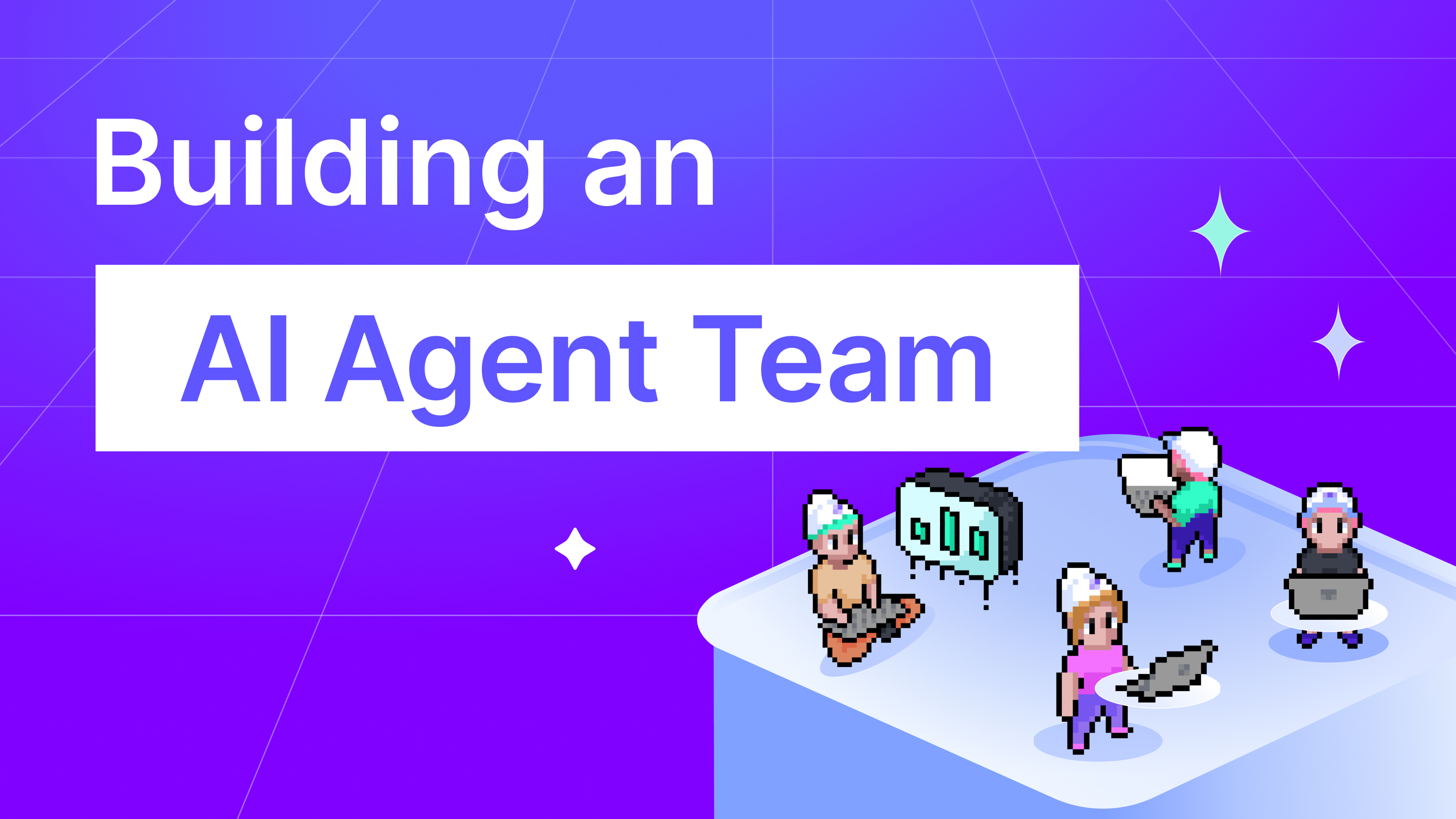
A Comprehensive Guide to Automating Company Research
In this blog post, we're going to demonstrate how to automate the manual task of researching and analysing companies. This is a step-by-step guide on how to build an AI tool from scratch for AI company analysis.
What we cover in this post
- How to create an AI Tool that can analyse a company based on only its name and description
- How to run this AI Tool across thousands of rows of data, enabling you to analyse a list of companies with a single click.,
As a tangible example, we've created an AI Tool under 10 minutes that researches companies for investment purposes.
We'll use this as an example for now, but a custom AI App like this can be applied to many other use cases and areas as well - such as conducting company research for sales prospecting.
Tasks The AI Tool will Execute
- Accurately answer a specific question we ask about the company, based on its description (e.g. “is this a technology company?”)
- Provide a precise description about the company by analysing an automated Google search result (e.g. “describe the product offering in 30 words or less”)
- Offer a unique insight about the company by analysing an automated Google search result (e.g. “have there been any fundraising rounds for this company?”
We'll also demonstrate how to operate this AI tool across a dataset with thousands of rows of data.
Ready to start your journey? Let's dive in!
The need for an AI tool in company research
Many businesses need to research companies, understand their products and services, their business models and more.
This process can be time-consuming and prone to human error.
But what if we could automate this process, boosting our productivity by 50x? That's where AI steps in.
How to build your AI Company Alanyzer
1. Set up the inputs for the AI tool
In this scenario, we use a list of companies, along with their names and descriptions.
Our inputs include:
- The name of the company
- A description of the company
- A question about the company that the AI is required to answer - e.g. “is this a technology company”?
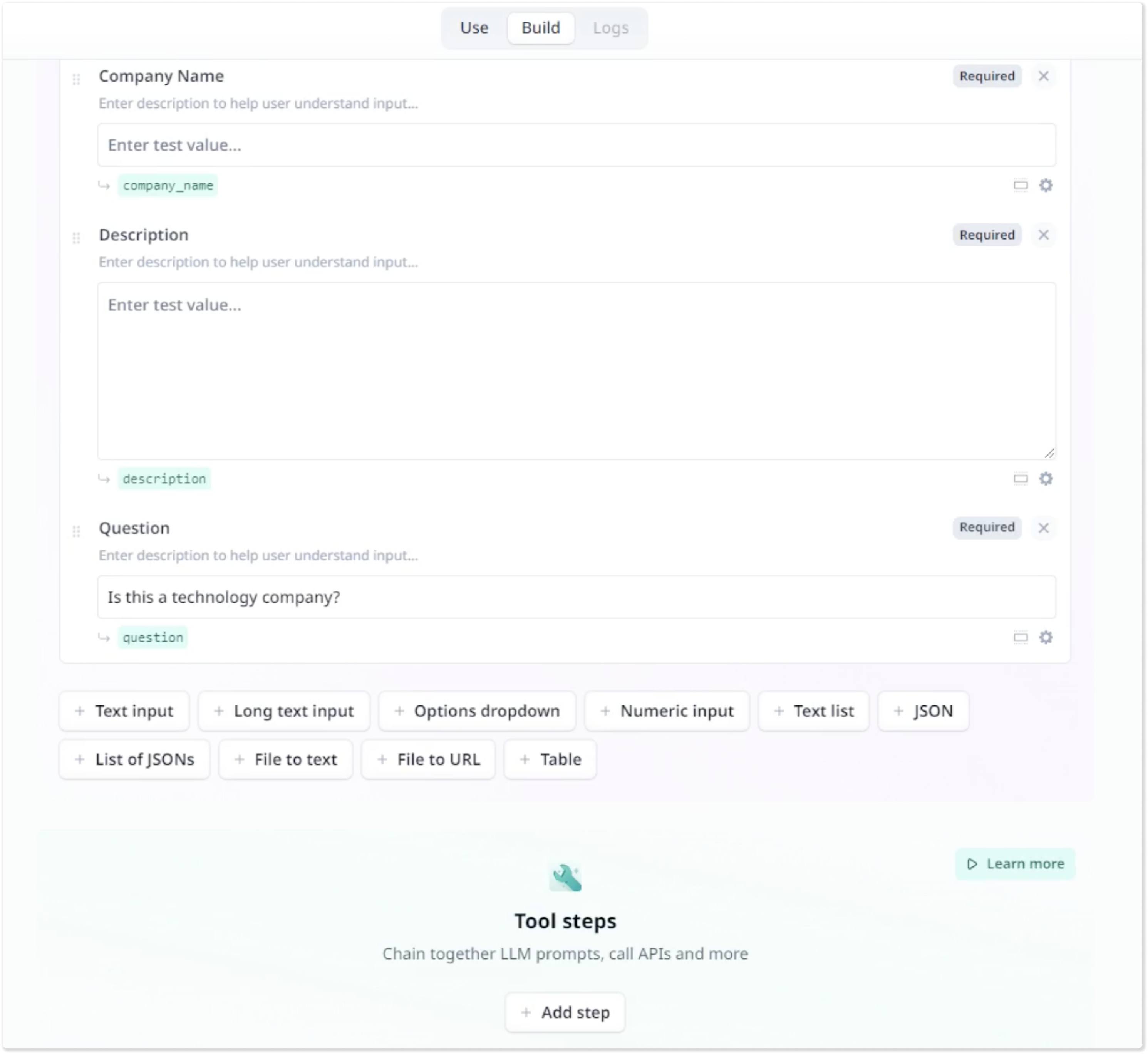
2. Answer a specific question about the company
In this step, we'll incorporate our first LLM step. We have a variety of models to choose from, but in this instance, we'll be using GPT 3.5 - the same one ChatGPT uses.
This LLM step is designed to answer our question based on the company's description.
Prompt:
“CONTEXT: “”” {{ description }} "”” Based on the description above, answer the following question: {{question}}. The answer should be "Yes", "Likely", "Maybe" "Unlikely", or "No".”
To complete this step, we'll also name the output of this step, so we can use it later as an input variable for further steps in our AI App. In our example, we named it “yes_no_answer”.
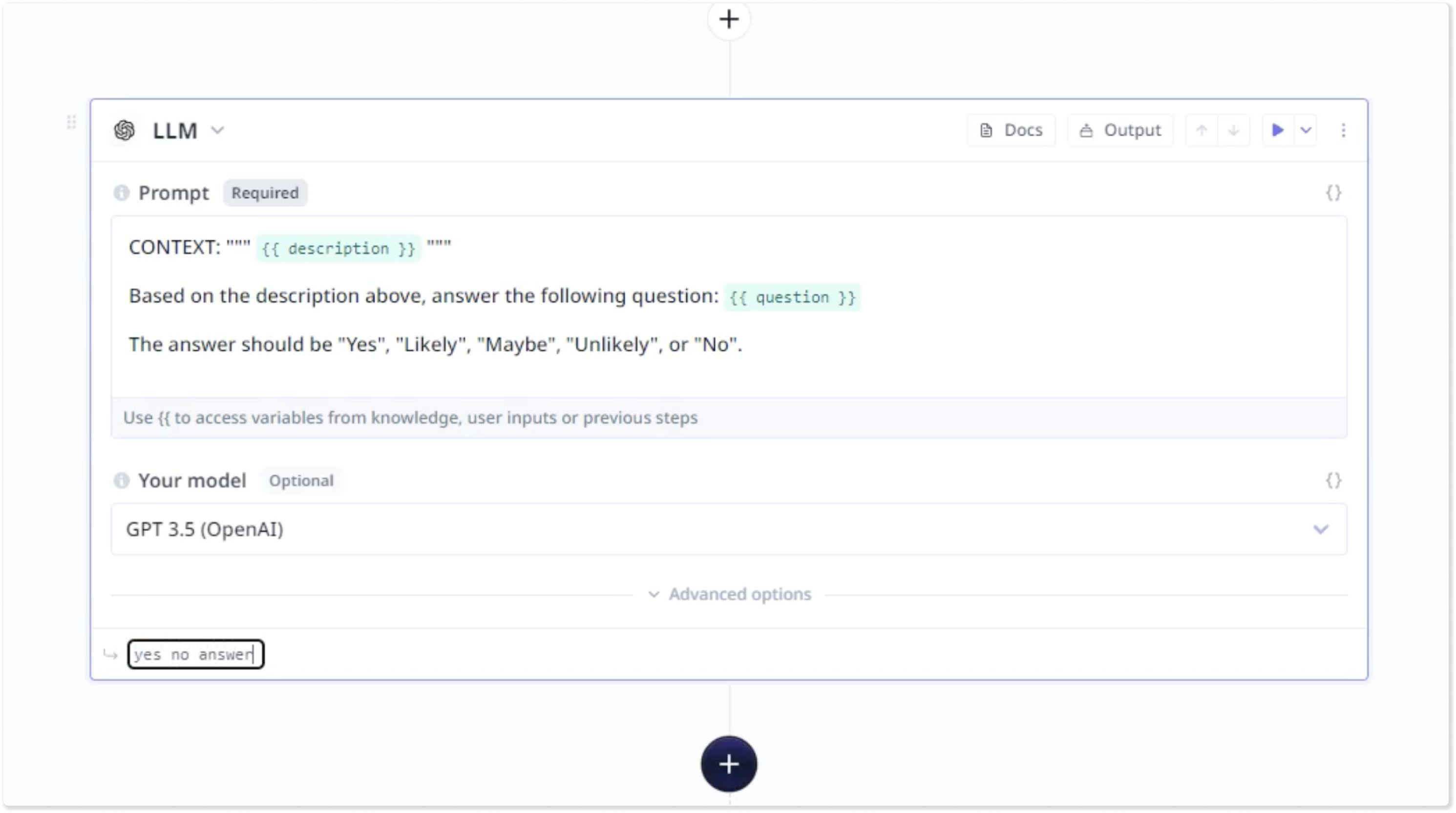
2. Describe the company's products using Google search
To describe the company's products using AI, we'll include a Google search step. We'll input the {{company name}} variable into this step, which the tool will then search on Google.
Then we'll add another LLM step in which we'll pass the results of the Google search.
In the prompt, we'll ask the LLM to give us a brief description of the company based on the Google search.
Prompt:
“CONTEXT: “””{{company _search.organic}}“”” Based on the search results above, describe the product offering of the company in 30 words or less.“
To complete this step, we'll also name the output of this step, so we can use it later as an input variable in our AI App. In our example, we named it “product_offering”.
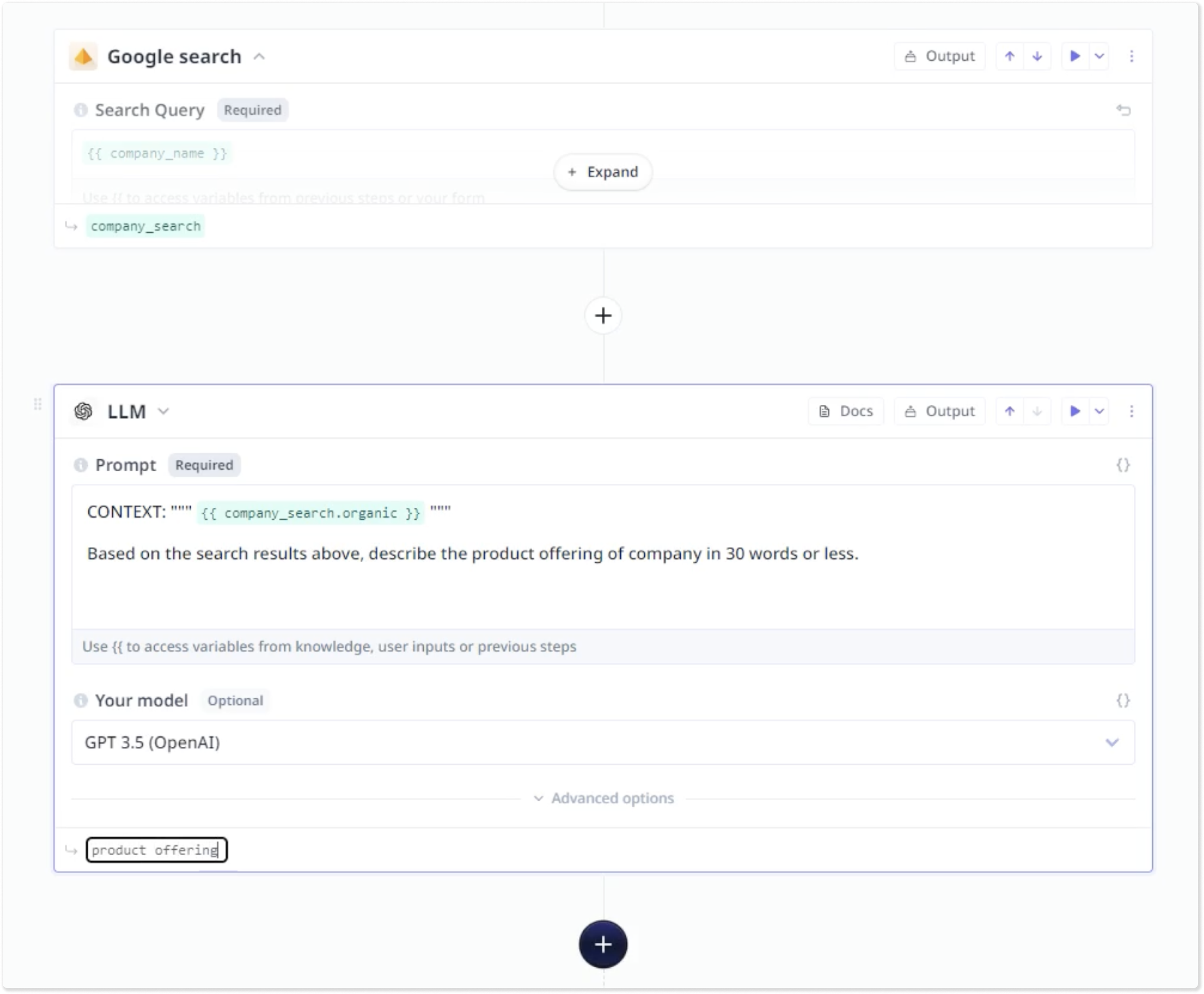
3. Give unique insights from Google search
In our example, the unique insight we want the LLM to provide us based on a Google search will be fundraising information.
First, we'll incorporate a Google search step. In the Google search step, we want the AI Tool to search for “{{company name}} fundraising information”.
We'll pass the result of the Google search into an LLM prompt that'll analyze this result and provide us with a unique insight about the company’s fundraising status.
Prompt:
“CONTEXT: “””{{fundraising_ search.organic }}“”” The context above contains search results about a company's fundraising status. Based on the search results, provide a summary of the fundraising status of {{company_name}} in 30 words or less, with specific attention to the amount raised, name of investors, and date of fundraise. If there is no information about the fundraising status of the company, output "No fundraising information available."”
To complete this step, we'll also name the output of this step, so we can use it later as an input variable in other steps in our AI App. In our example, we named it “fundraising_information”.
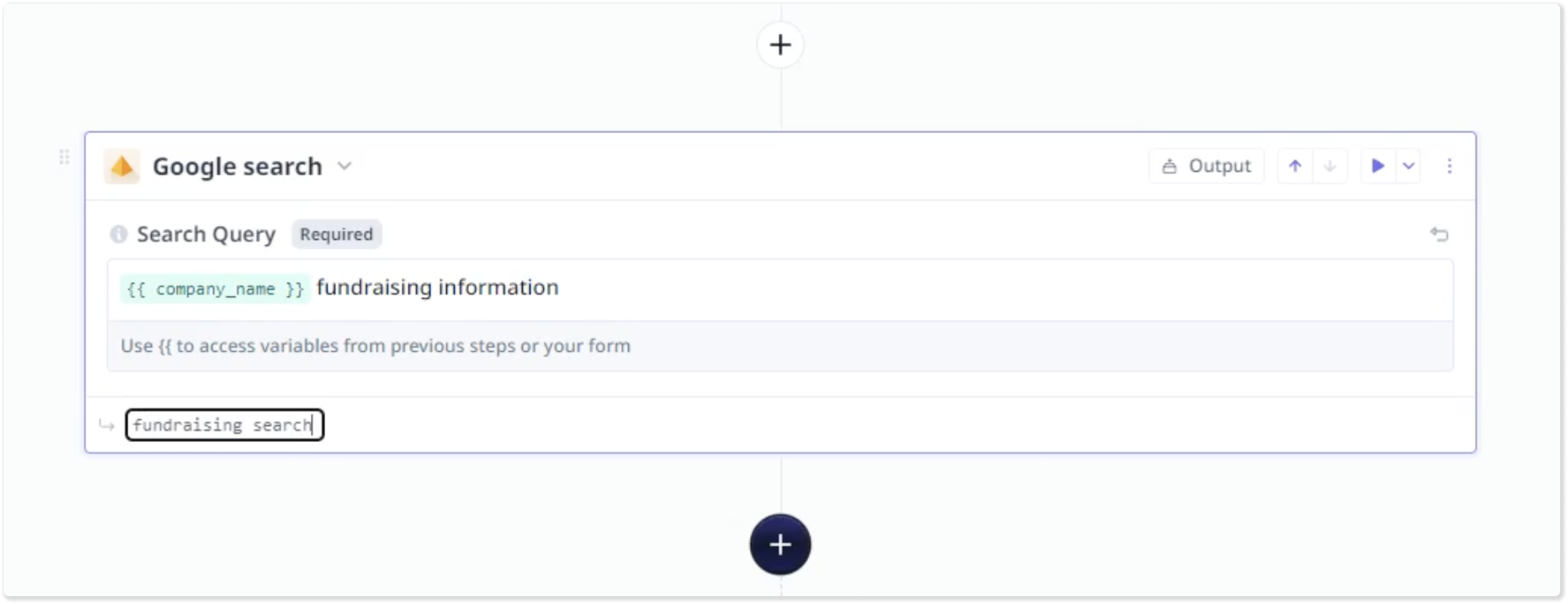
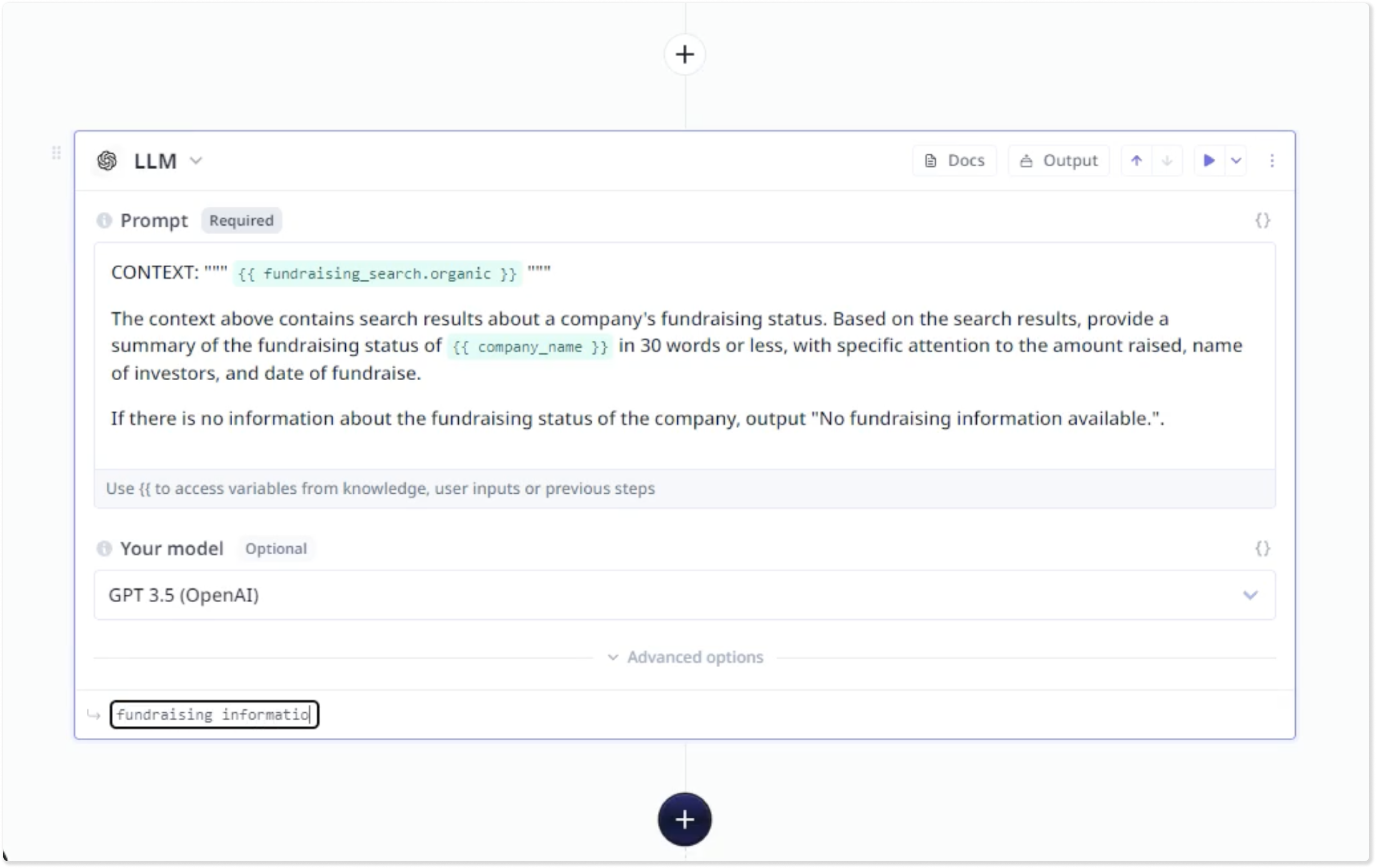
4. Configure the AI App’s output
We want our AI App to provide 3 different outputs:
- Company description
- Product offering
- Fundraising information
We can configure these in the “configuration” menu of the tool output. We'll pass the following variables:
- {{yes_no_answer. answer}} variable with “yes_no_answer” output
- {{product_offering.answer}} variable with “product_offering” output
- {{fundraising_information.answer}} variable with “fundraising output”
The 3 outputs will transform into 3 new columns in the AI-powered Bulk Data Enrichment later.

5. Analyze thousands of rows with a single click
Now that we've finalised our AI Tool and are happy with how it functions, we can upload our large dataset full of companies we wish to analyse.
With Relevance AI's AI-powered Data Enrichment feature, you can upload your data and run your AI Tool on thousands of rows with a single click.
Once you're in the 'Data' feature, you can choose which AI Tool you want to run on your data. After selecting the AI Tool you want to enrich your data with, you'll need to map the table columns to the inputs of the AI Tool.
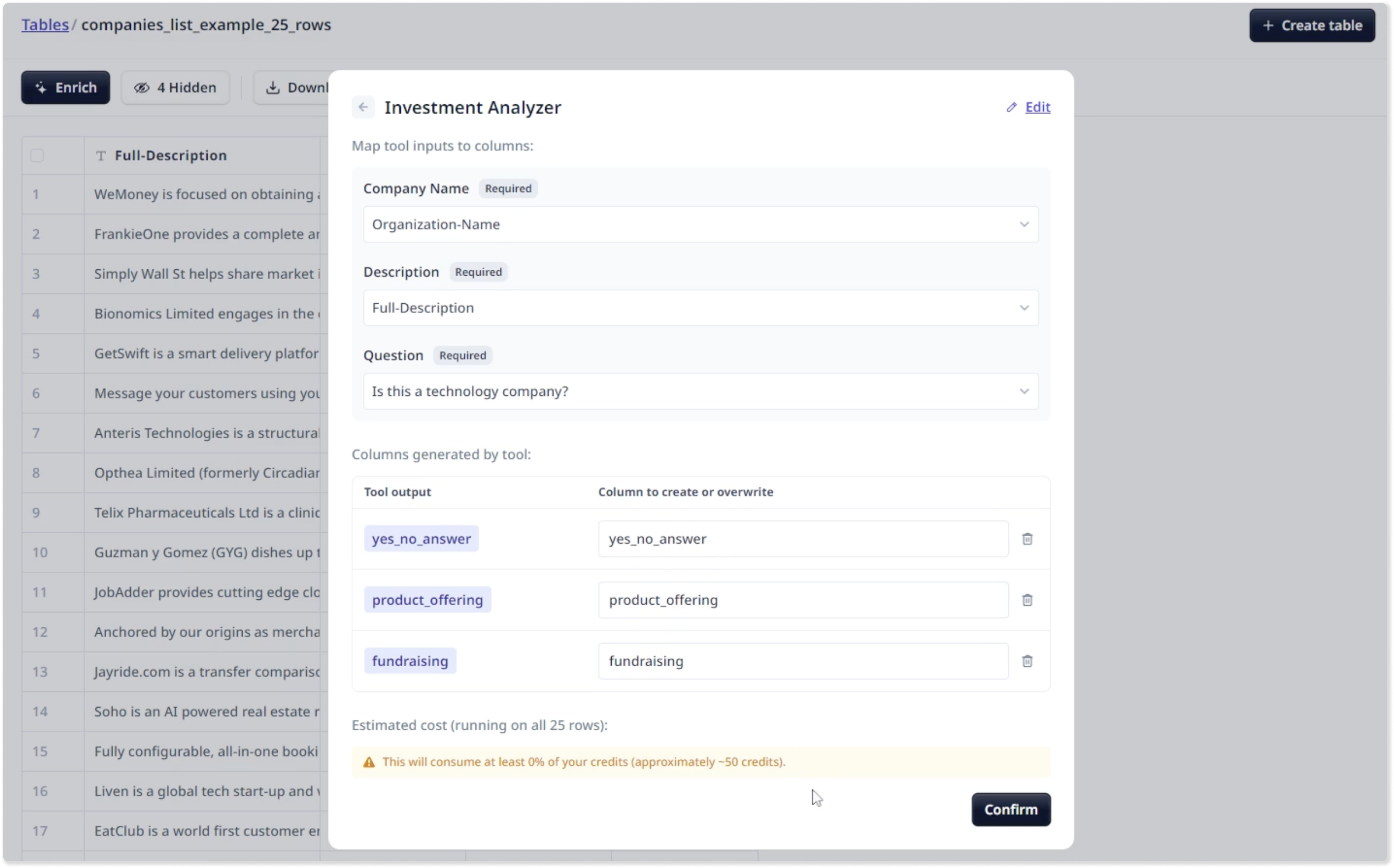
In our Investment Company Analyzer example, the AI App will append 3 new columns to your dataset, based on the output configuration of the AI Tool. Based on our output configuration above, the 3 new columns will be:
- “yes_no_answer”
- “product_offering”
- “fundraising output”"

Wrapping up
Ready to kick-start your journey with AI company analysis?
By automating company research with AI, you can save time, reduce errors, and gain valuable insights that can help you make more informed decisionsm faster.
Why not take the next step and sign up to Relevance AI for free?
You can get to value in less than a few minutes. With Relevance AI, you can do the same as described in this blog post and much more.




